Presenter: Nasser Algharem
Affiliation: King Khaled Hospital, Saudi Arabia
Abstract
This article reviews combat-related extremity arterial injuries (pseudoaneurysms, AVFs) managed by interventional radiology. Techniques included embolization, stent-grafts (Viabahn), and closed-loop balloon-stent systems, achieving hemorrhage control and limb salvage.
Introduction
Blast injuries require rapid, minimally invasive interventions. This series highlights IR’s role in combat trauma.
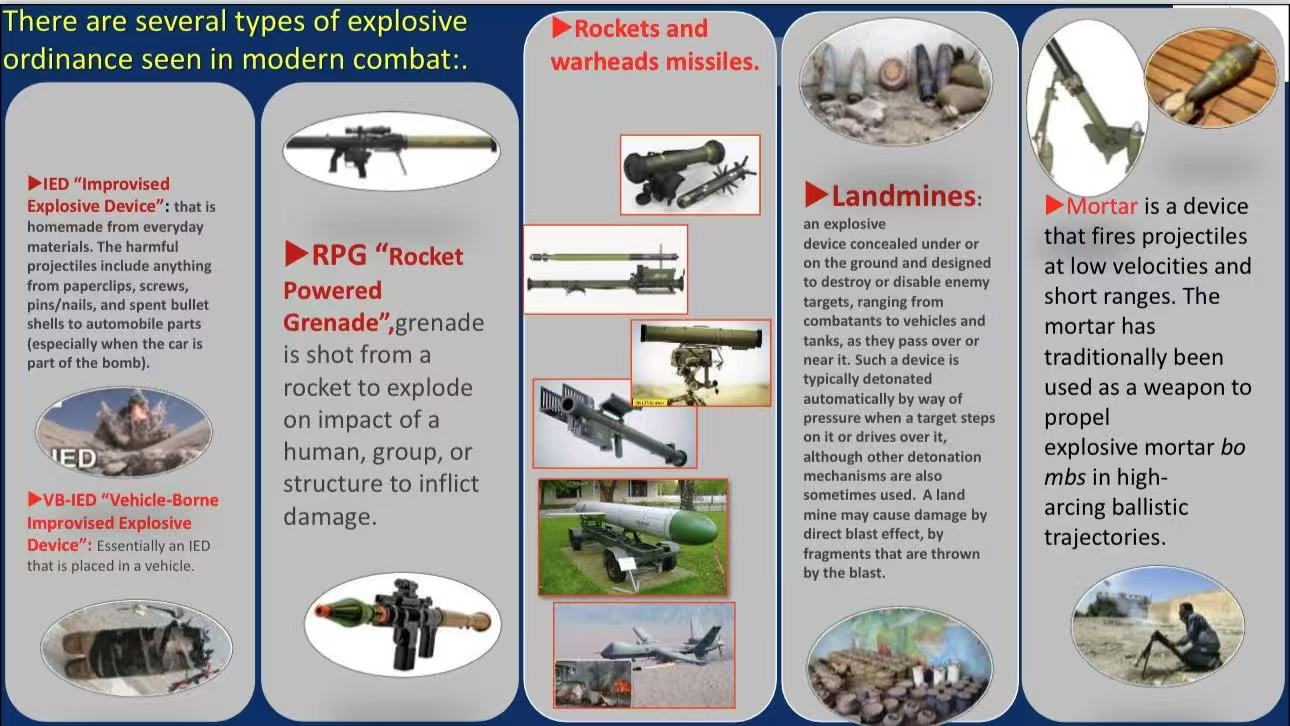
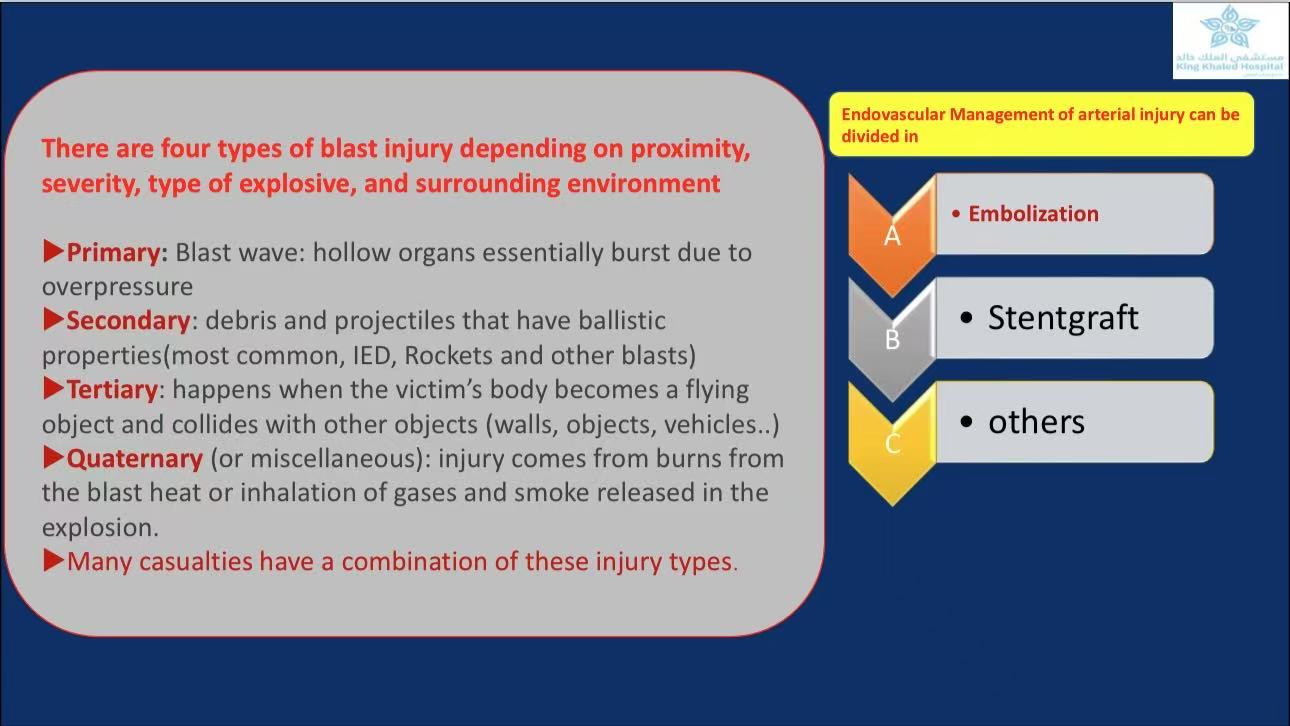
Case Study
Case 1: A 23-year-old with neck PSA treated by coil embolization.
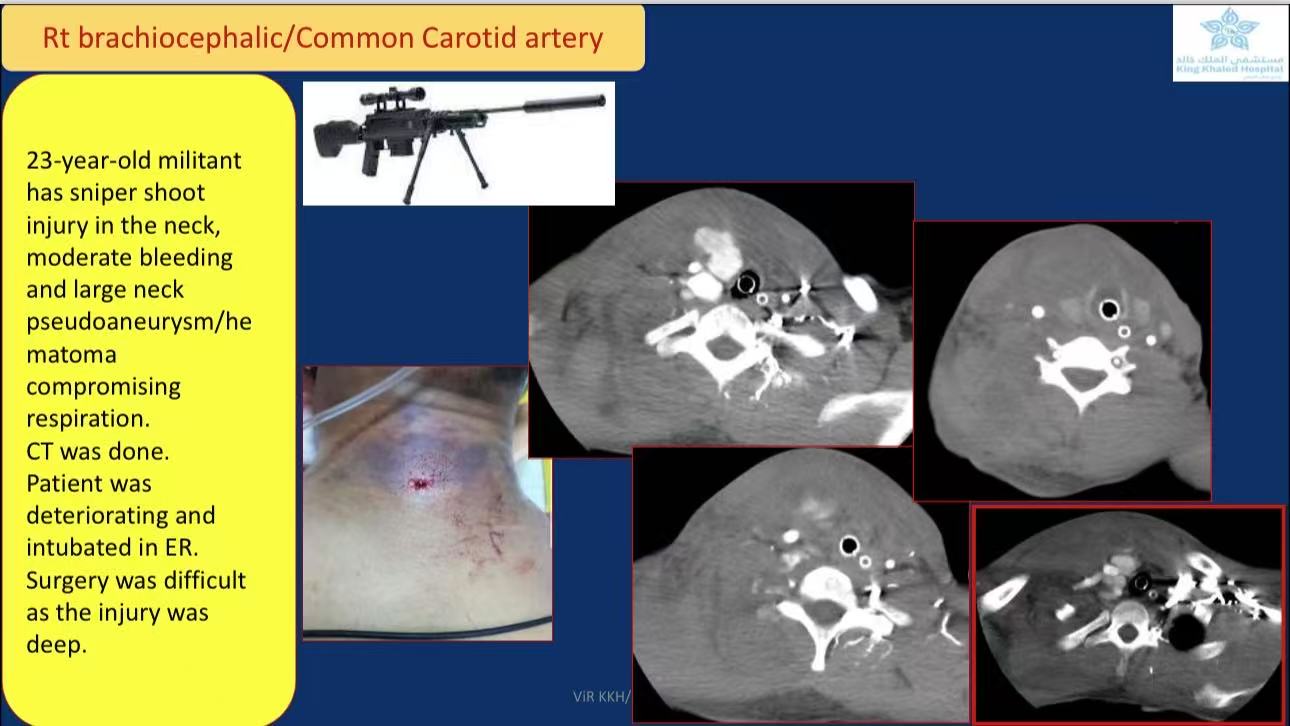
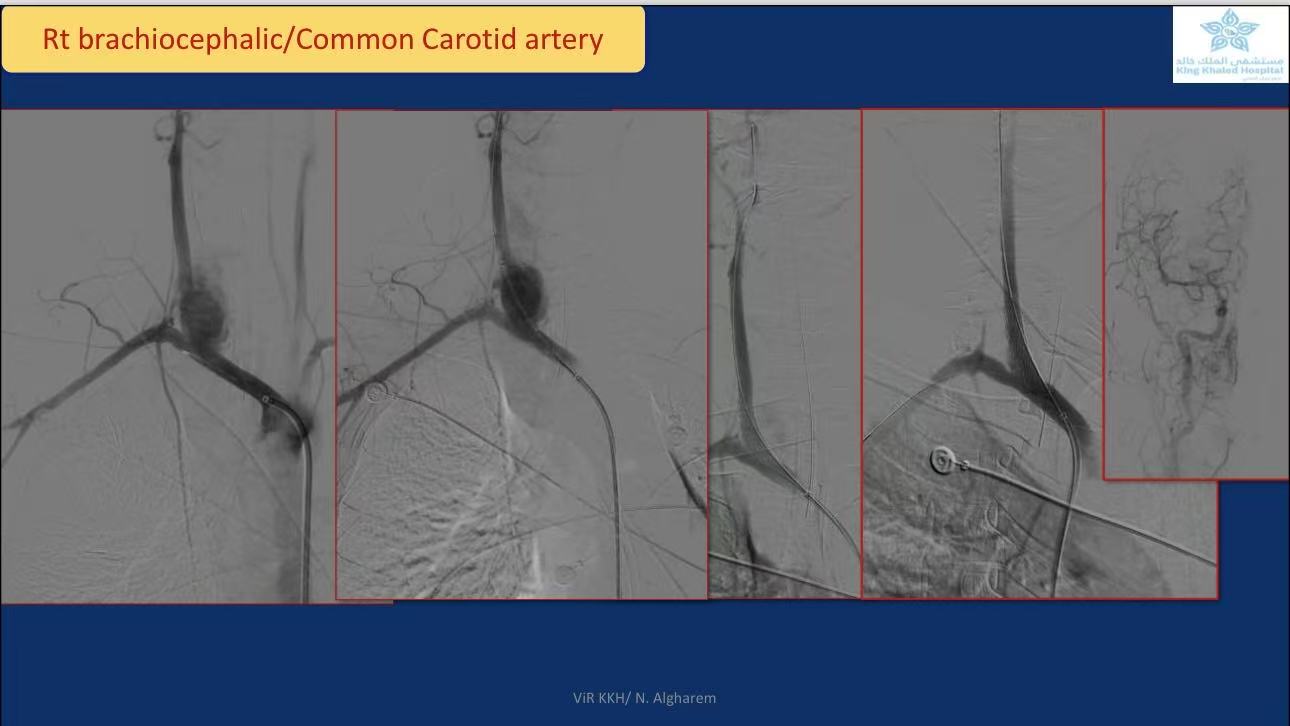
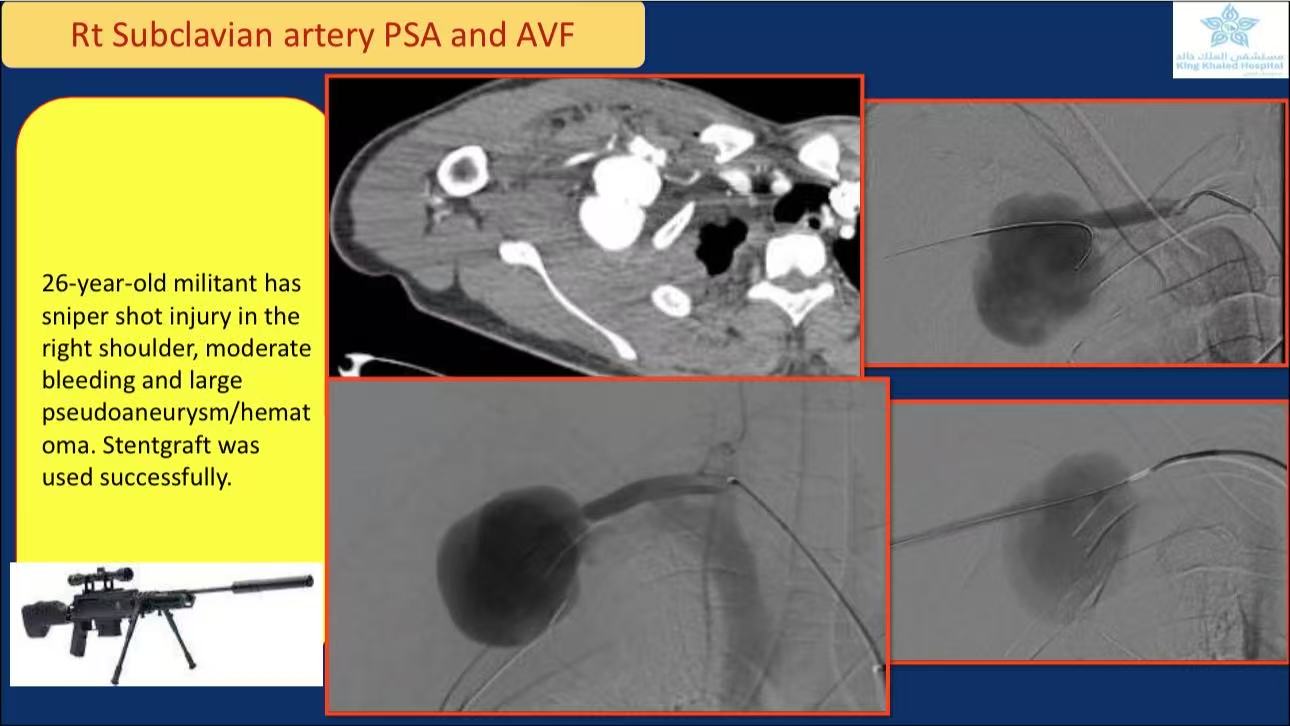
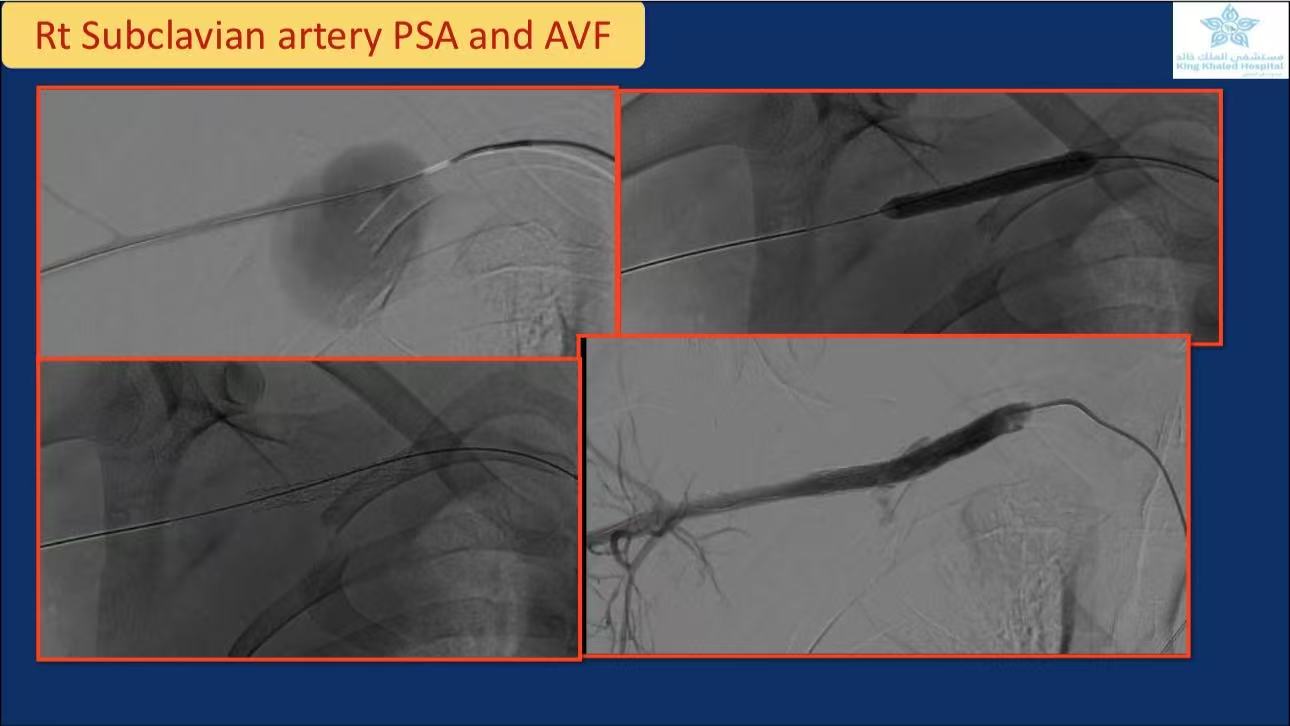
Case 2: A 26-year-old with subclavian AVF managed by Viabahn stent-graft.
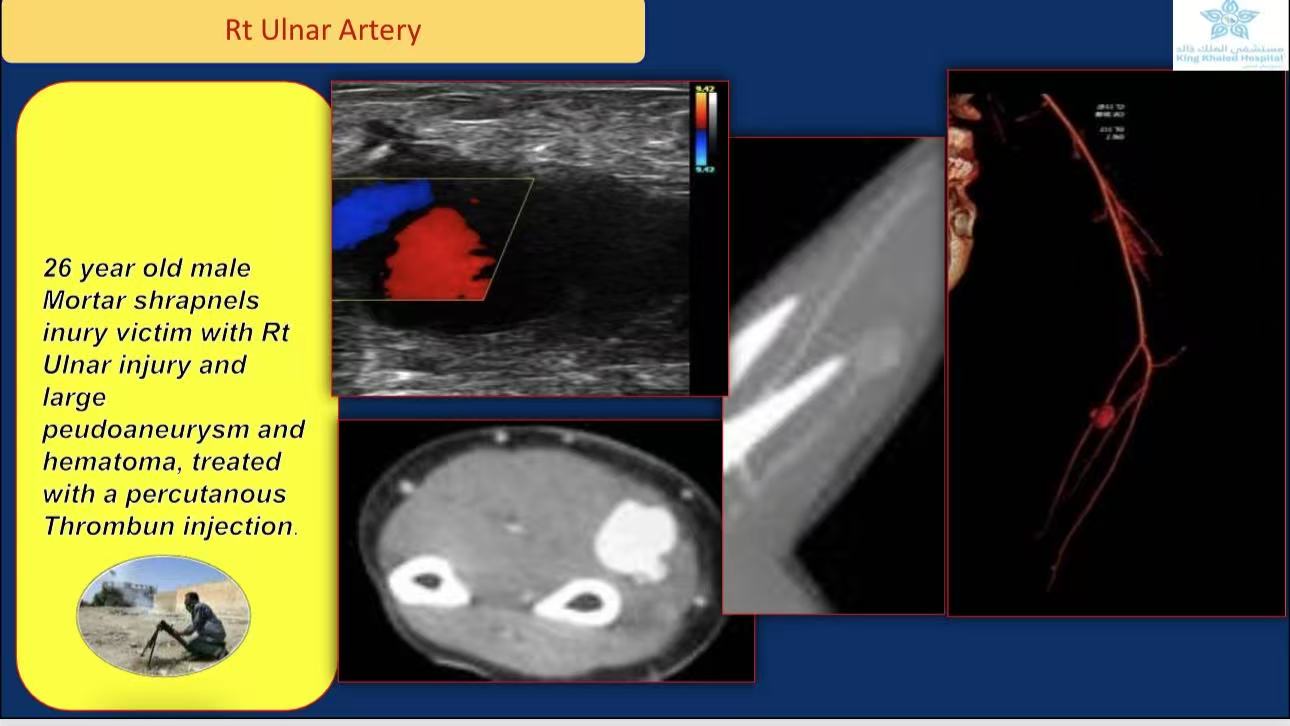
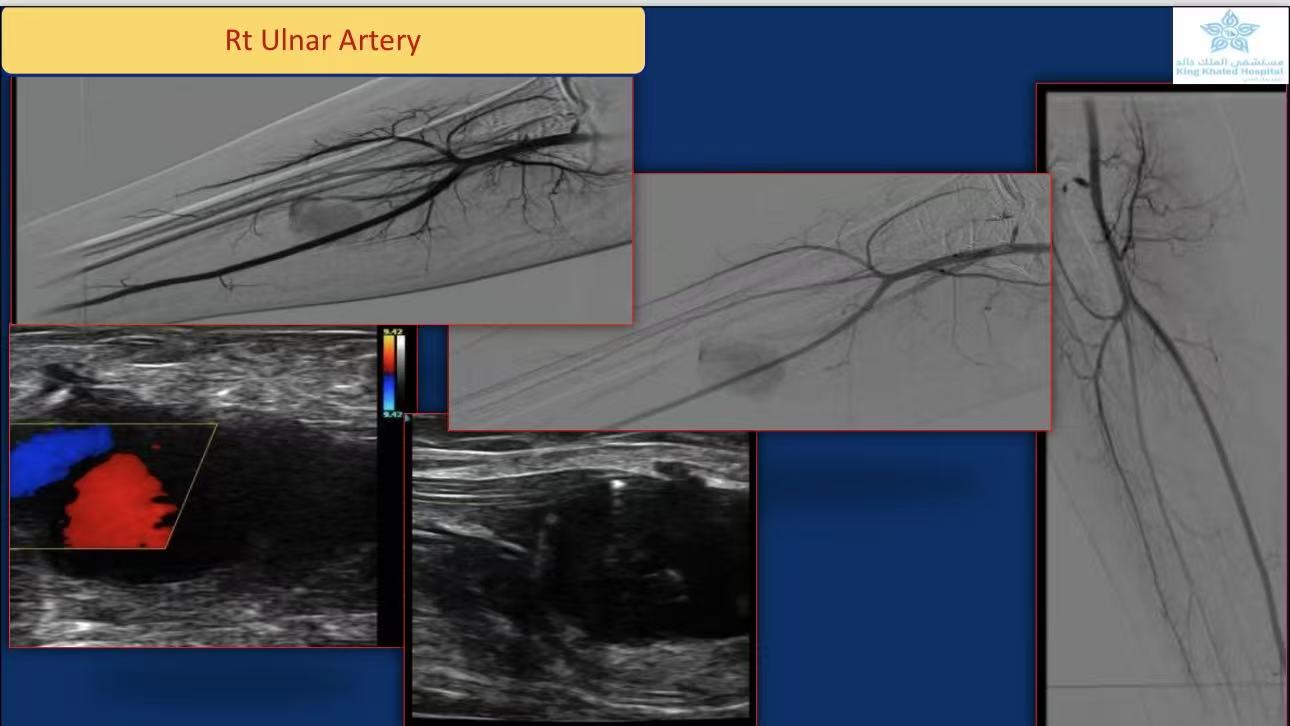
Case 3: A 27-year-old with popliteal PSA resolved via percutaneous stenting.

All cases showed resolved bleeding and improved function.
Conclusions
1.Embolization and stent-grafts are first-line for combat arterial injuries.
2.Innovative techniques address complex collateral flow.
3.Multidisciplinary teams enhance battlefield trauma care.


